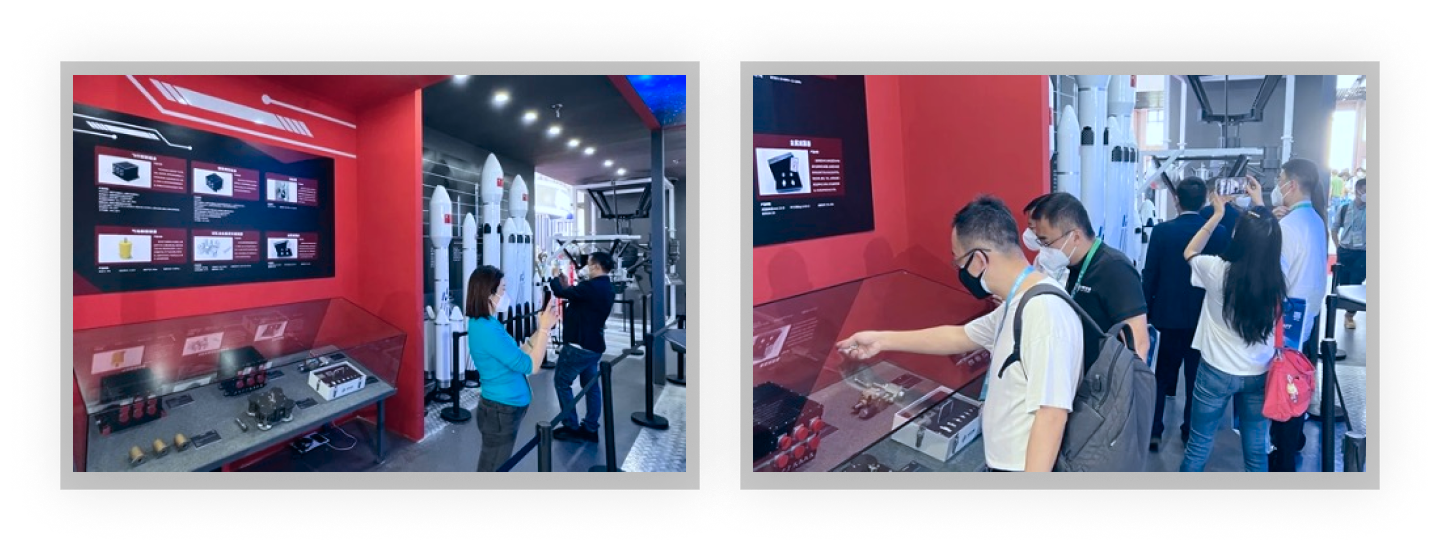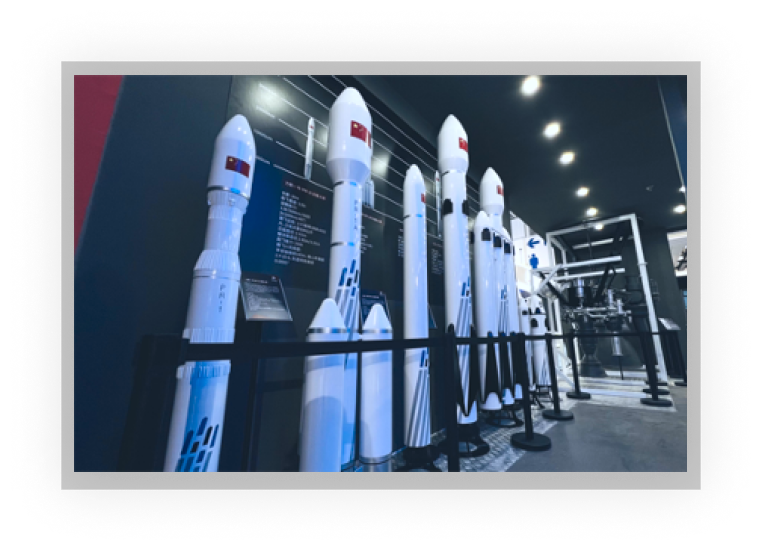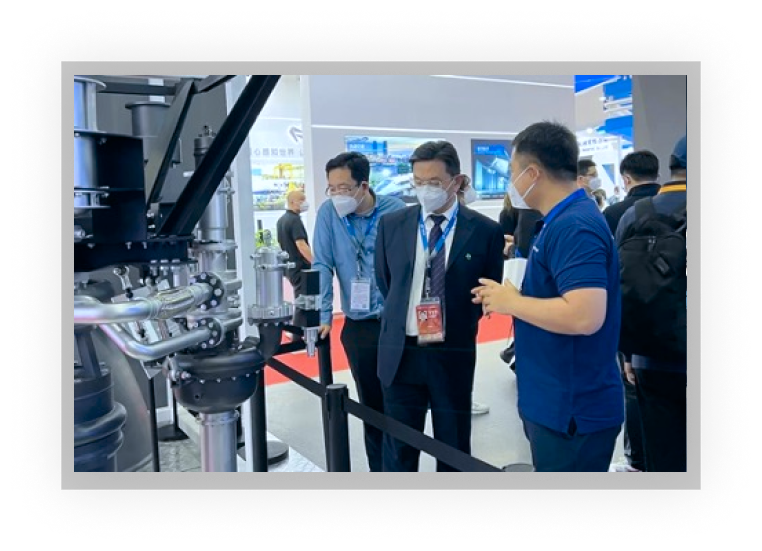
2022 Grand opening of Zhuhai Airshow and the exclusive preview of CAS Space’s big and powerful rocket!
“
On the occasion of the successful launch of the “Mengtian” Lab Module, the construction of China’s space station entered the sprint stage, and the world-class airshow also opened in Zhuhai, China, continuing to convey the voice of openness and self-confidence to the world, showing the power of China’s aerospace industry to take off.
On November 8, the 14th China International Aviation & Aerospace Exhibition (hereinafter referred to as “Zhuhai Airshow”) was officially opened at the Zhuhai International Air Show Center. This year’s airshow adopts the “online + offline” exhibition, with an indoor exhibition area of 100,000 square meters, and more than 740 domestic and foreign enterprises from 43 countries and regions exhibiting. Furthermore, CAS S[ace exhibited more than ten cutting-edge products of space science and technology, such as the “Kinetica” series of launch vehicles, space tourism vehicles, space capsules and wide area vehicles, etc. (Booth No.: H5C3), which attracted wide attention from media and guests from all walks of life.

Zhuhai Airshow is a business card for openness to the whole world. In the background of the increasingly important trend of globalization, each country’s airshow is a platform to show the national image, highlight the international status, and promote the opening and exchange with the outside world. In 1909, the French passion and vision for aerospace in Paris turned into a fair, which later became the most prestigious Paris Air Show. Nowadays, Zhuhai Airshow, which is comparable to Paris Air Show, has become a crucial window for the world to pay attention to China and understand China.
This exhibition is an important showcase and an excellent opportunity for CAS Space’s strength in the aerospace field. Based on the company’s advantages in technology research and development, scientific and technological innovation, and resource accumulation, the exhibition brings exhibitors a multi-category, multi-scene, and deep experience display of aerospace products and applications.
Watching focus I
China’s largest solid launch vehicle
Kinetica-1A launch vehicle is the largest solid launch vehicle in China. On July 27, 2022, at 12:12 a.m., it successfully put six satellites into the scheduled orbit by means of “six satellites in one launch vehicle” at Jiuquan Satellite Launch Centre and achieved complete success in its first mission. The vehicle is a four-stage solid launch vehicle with a takeoff weight of 135 tonnes, a takeoff thrust of 200 tonnes, an overall length of 30 meters, a core stage diameter of 2.65 meters, a fairing diameter of 2.65 meters in the first flight, and a 500-kilometer sun-synchronous orbit carrying capacity of 1,500 kilograms. The technical innovation has given “Kinetica-1A” a series of advantages such as large capacity, high accuracy in orbit, high design reliability, fast response, high launch efficiency, low logistical requirements, low launch cost, flexible and convenient use, and good environmental adaptability, which has enriched the spectrum of China’s solid launch vehicle launch capability and contributed to the technological change in the field of China’s launch vehicles.
Watching focus II
The collective appearance of the “Kinetica” series of launch vehicles


The “Kinetica” series of launch vehicles is representative of the strength of CAS Space to achieve many innovative breakthroughs based on mature technologies. In accordance with the overall development idea of “solid first, liquid follow-on, full-spectrum capability”, CAS Space provides continuous, stable, reliable, and economic launch capabilities and services, deeply cultivates the main responsibility of science and technology innovation, consolidates the foundation, slowly but surely, and makes further efforts in multiple fields of commercial spaceflight to achieve new breakthroughs.
Kinetica-1 launch vehicle is based on a mature solid engine integrated design scheme of 2.65 meters in diameter, fully inheriting the technology and product foundation of Kinetica-1A. It is designed for the launch of low-orbit Internet constellations and low-cost cargo transportation needs of space stations;
Kinetica-2 is a small, low-cost intelligent liquid launch vehicle with a two-stage configuration, and the first and second stages adopt the independently developed 80-tonnes (Xuanyuan II) and 15-tonnes (Xuanyuan I) low-cost liquid oxygen/kerosene rocket engines respectively, with the intelligent launch and smart flight capabilities;
Kinetica-3 is a medium-sized reusable launch vehicle, with both the first and second stages adopting 80-tonnes reusable liquid oxygen/kerosene engines, with recovery and reuse capabilities, for the low-cost launch of low-orbit constellations and large-scale space facilities;
Kinetica-3 Heavy adopts a reusable universal core stage configuration, with the core and booster stages in the same configuration. As a result, the core stage and booster can be recovered and reused to meet the demand for large-scale launches in near-Earth orbit, and the configuration of the high-performance liquid upper stage improves the adaptability to high-orbit launch missions such as geosynchronous orbit and lunar transfer orbit.
Watching focus III
The “Xuanyuan” series of liquid engines' exclusive spoilers
The “Xuanyuan I” liquid engine uses non-toxic and non-polluting liquid oxygen/kerosene propellant and adopts a gas generator cycle scheme, capable of multiple ignitions and a wide range of variable operating conditions. Through the application of mature industrial materials, standard parts, and 3D printing technology, the production cost is reduced, and the production cycle is shortened. The engine is used as the main power for the first stage of small launch vehicles, the second and third stages of medium launch vehicles, and suborbital vehicles, and can meet the demand for first stage recovery of liquid rockets. The liquid engine of “Xuanyuan II” uses non-toxic and non-polluting LOX/kerosene propellant and adopts a gas generator cycle scheme capable of multiple starts and a wide range of variable operating conditions. Through the application of mature industrial materials, standard parts, and 3D printing technology, the production cost is reduced and the production cycle is shortened. The engine is used as the main power for the first and second stages of large and medium-sized launch vehicles and can meet the demand for liquid rocket first-stage reusability.

Watching focus IV
A new immersive experience in a space capsule

The space tourism vehicle of CAS Space adopts the combination of a single-stage-to-orbit launcher and a space capsule. It comes with a diameter of 3.35 meters, five 15 t liquid oxygen kerosene engines, a take-off thrust of 75 t, a take-off mass of 70 t. The space capsule has a diameter of 3.35 meters, is 3 meters high, and comes with four panoramic portholes. A single flight takes 7 passengers. Vehicle launch, and recovery of the landing site will be coordinated with a space theme park, space experience museum and space science education facility under planning and construction; passengers receive short-term training here before the flight. After that, passengers will cross the Kármán line and experience the weightlessness of being free from the Earth’s gravity. Finally, the space capsule will land safely by parachute, and passengers will return to Earth safely. On-site exhibitors can enter the 1:1 space capsule for an immersive experience.
At present, CAS Space devotes itself to letting everyone have the opportunity to embrace the starry sea, dream of space, travel to the stars, and look at our bright “blue planet.”
Upward, building a bridge between the stars and Earth
Upward, leading science to change the world
Upward, exploring the mysteries of the vast universe
Upward, opening up the future of human civilization
Note: The Lijian series is also known as “Kinetica”, and designations of “PR” or “ ZK” have been used in various literature.